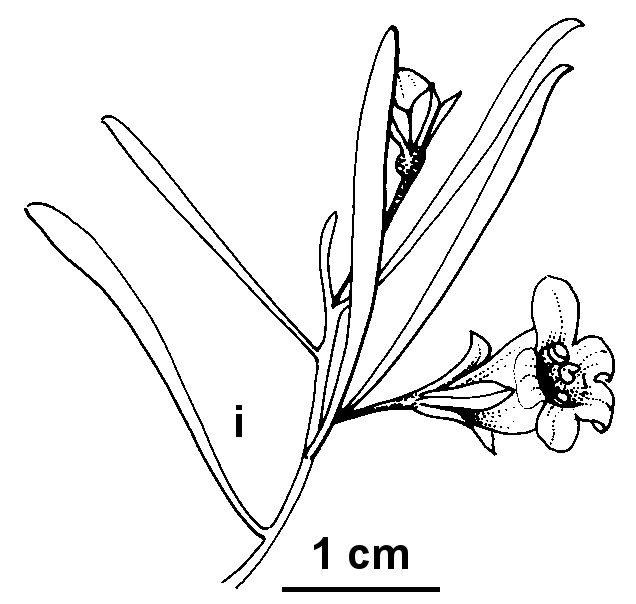Shrub to c. 3 m high, multistemmed, glabrous, viscid; branches sometimes obscurely tuberculate. Leaves alternate, c. terete or linear, mostly 1–3 cm long, 0.5–3 mm wide, acute, margins entire. Inflorescences 1(–2)-flowered; pedicels 5.5–18 mm long, straight or curved. Flowers zygomorphic; sepals ovate to oblanceolate, 5.5–11 mm long, subequal, usually obtuse, valvate, cream to purplish; corolla usually 12–15 mm long, pubescent outside, partially villous inside, usually pale lilac, spotted, upper lip 2-lobed; stamens 4, included, anthers reniform; ovary villous, style pilose or villous at least in proximal half. Fruit ovoid, 3.5–5 mm long, 2.5–3.5 mm diam., dry, villous. Flowers mostly spring and summer.
MuM, Wim, MSB, MuF. Also NT, SA, Qld, NSW. Confined in Victoria to the far north-west where a component of Belah (Casuarina pauper) and Sugarwood (Myoporum platycarpum) woodland on slightly higher ground of the Murray River floodplain. An outlier from Swan Hill (1950) is of uncertain source (possibly cultivated). Two pre-1900 collections labelled 'Wimmera' and 'Sandhurst' are of doubtful provenance.




